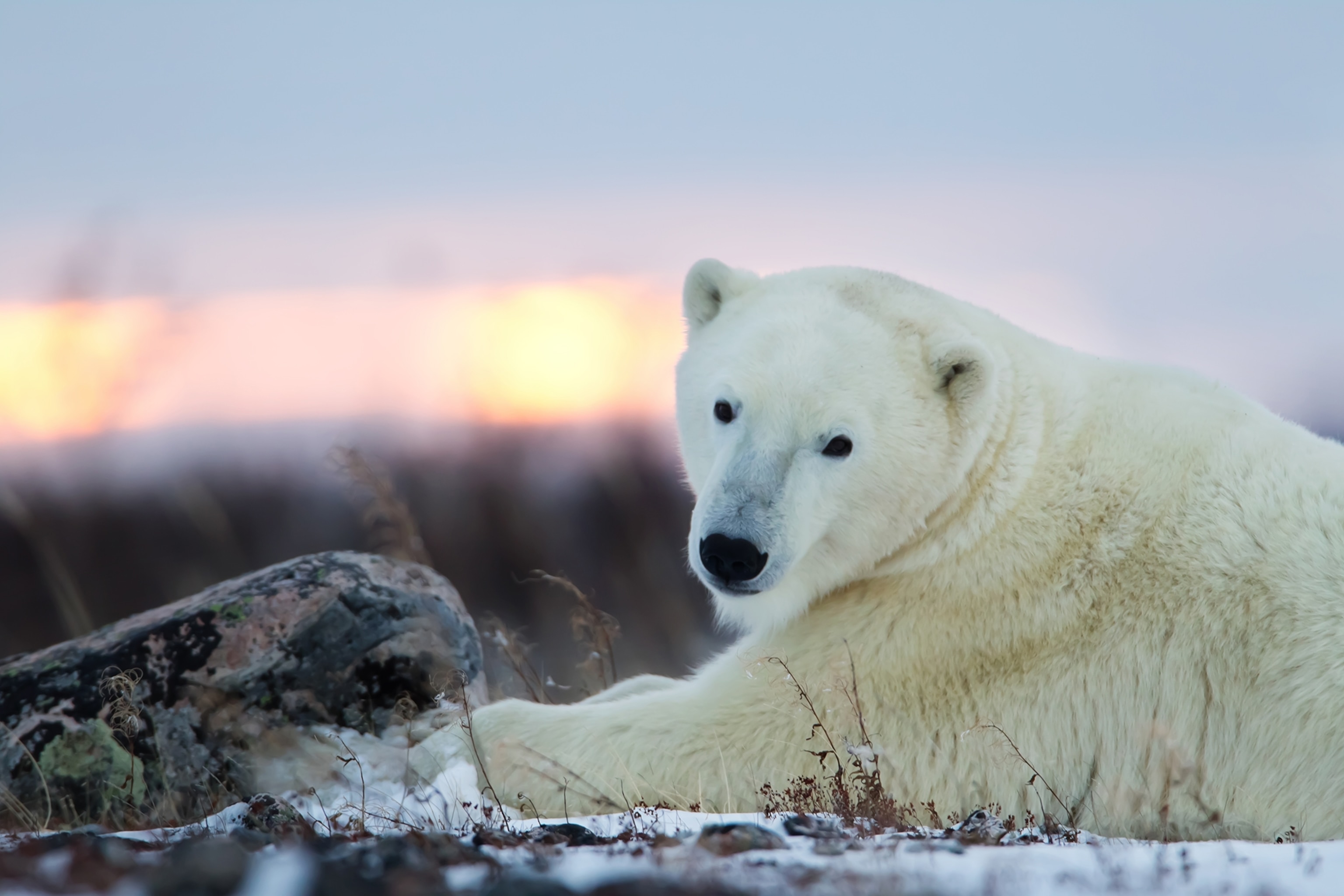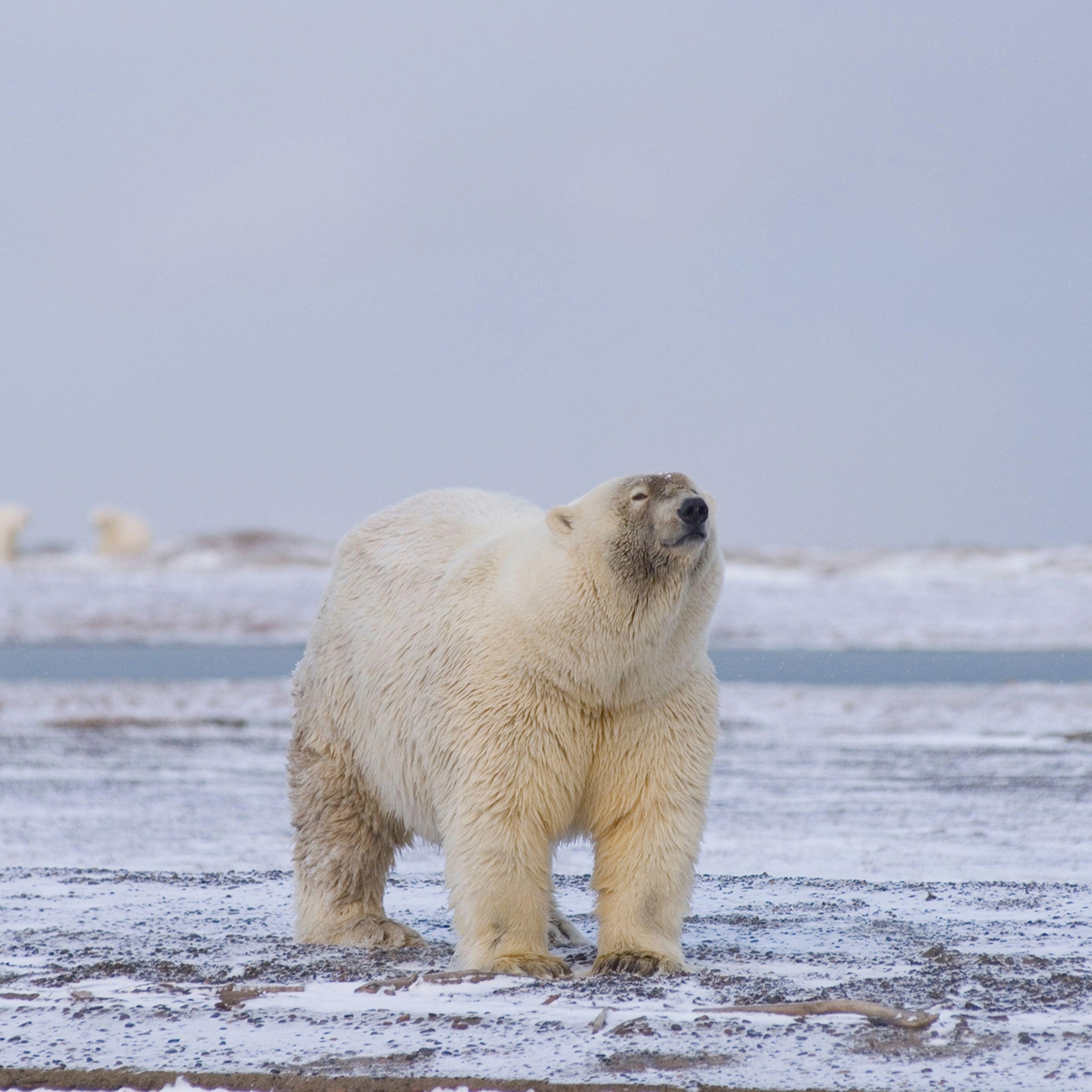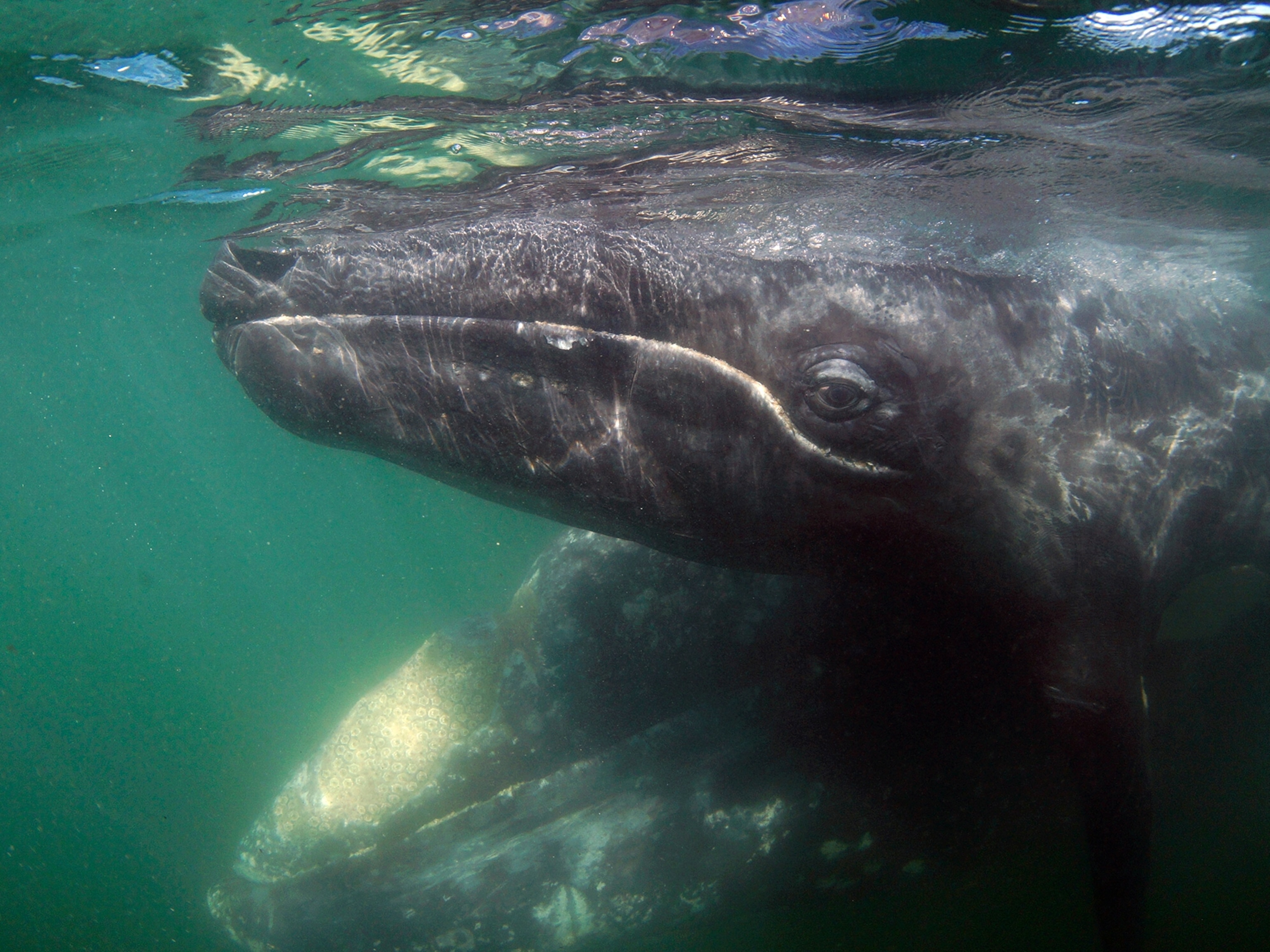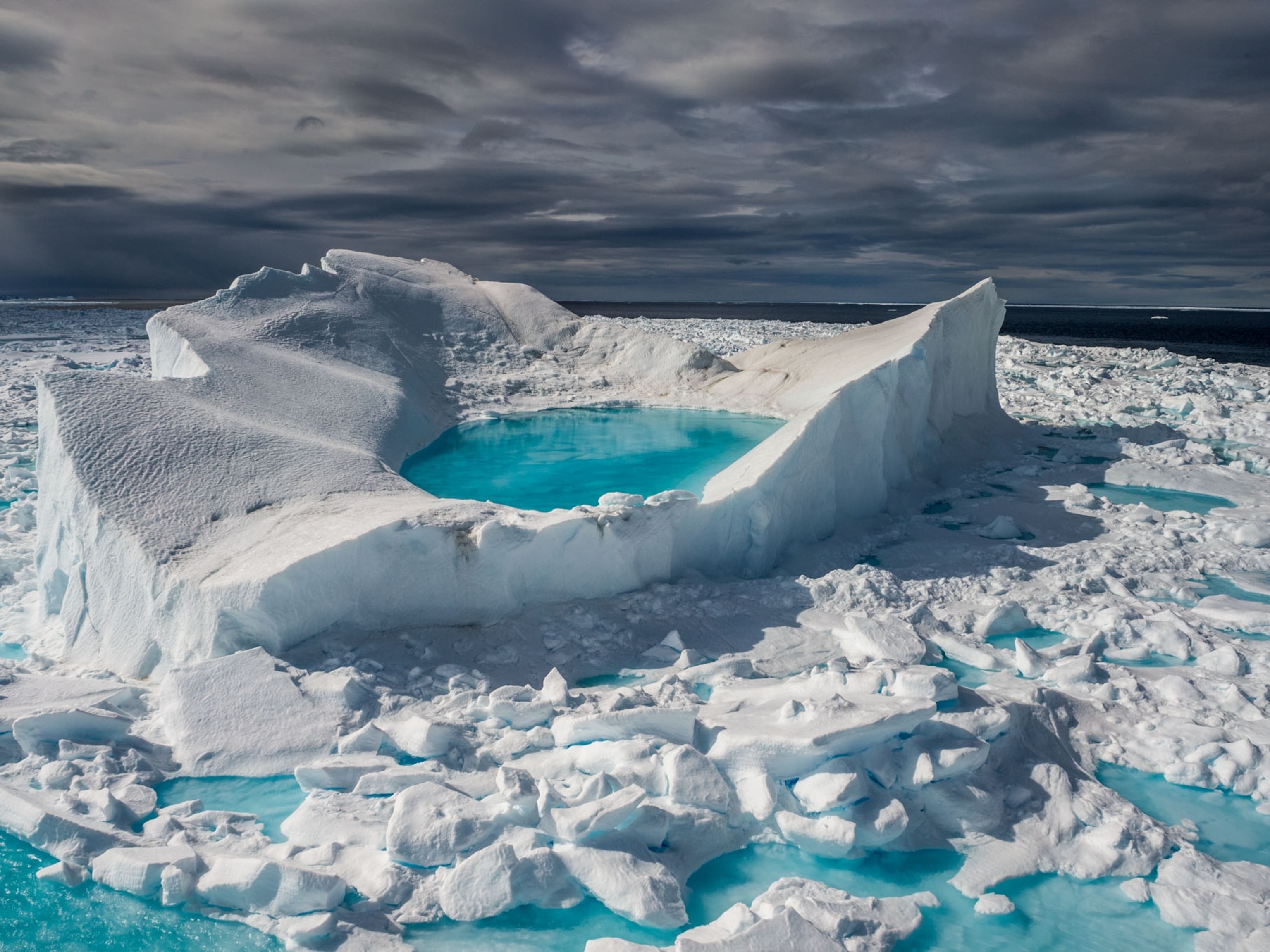
Polar bears are trying to adapt to a warming Arctic. It’s not working.
The bears can’t thrive on land, a concerning discovery as sea ice continues to disappear at a rapid pace, a new study says.
For the polar bears of Manitoba, Canada, the sea ice that envelops western Hudson Bay for most of the year is the ideal hunting ground for a feast of blubber-rich seals. But then come the dog days of summer, when the ice melts and the bears are forced onto land. There, life is no picnic for these giant creatures.
Deprived of adequate food supplies, the bears must live off their fat reserves for several months. Now, climate change is causing that wait to grow even longer, as warming temperatures melt the sea ice earlier in the spring and solidifies it later in the fall. The Arctic, research shows, is warming twice as fast as the rest of the world. The question is: How will polar bears adapt to more time spent on land?
The answer, according to a new study published in Nature this week, is not very well. The study shows the carnivores forage for food, such as birds and berries, rather than resting, which is what scientists thought most bears did while on land. But the study also concludes that doing so causes the bears to spend as much extra energy as they gain from eating the food. During the study's three-week research period, bears lost an average of more than three pounds of weight each day while waiting for the ice to form again.
“There’s no winning strategy” for the bears, says study leader Anthony Pagano, a research wildlife biologist with the U.S. Geological Survey in Anchorage, Alaska. “They will not be able to find the food they need on land.”
Forced to spend longer periods on land without sufficient food could cause vulnerable individuals, especially young bears, to suffer from starvation, scientists warn, eventually endangering the survival of entire populations.
With polar bears increasingly moving into new land spaces in search of food, dangerous confrontations with humans are also likely to increase, researchers say.
Surprisingly active
Polar bears live in 19 regions across the Arctic, from Canada to Greenland to Russia. While some populations live on permanent ice, others inhabit seasonal ice. Climate change has caused ice loss to some degree in all the regions, leading to drastic population declines. As a result, the International Union for Conservation of Nature lists polar bears as vulnerable to extinction.
Between 1979 and 2015, the length of time without ice in western Hudson Bay has risen by three weeks, according to the study. About 800 polar bears dwell in the western side of Hudson Bay, a decline of 30 percent since 1980. Those bears now spend an average of 130 days on land a year, a number expected to increase by 5 to 10 days per decade in the future.
To glean how the polar bears spend their time on land, Pagano and his team placed GPS-enabled video trackers on 20 Hudson Bay bears for three-week periods in the summers between 2019 and 2022. The scientists tracked the animals’ diet, movement, behavior, changes in body mass, and how much energy they exerted each day. (Learn about a newly identified population of polar bears.)
“Previously we only had snippets [of information] on what the bears do on land,” says Pagano, who led a similar study several years ago focusing on the bears’ activity on sea ice.
The behavior of the bears varied wildly. Three made long swims in open water, with one female swimming over a hundred miles. Video footage revealed the bear finding a dead beluga whale during her swim, but that she was unable to feed on it. “It highlighted how the bears are not able to eat in open water,” says Pagano.
He says the findings surprised him and his colleagues, who had thought polar bears mostly minimized their activity while on land to conserve energy.
While adult males did indeed spend almost all their time resting—reducing their energy expenditure on land to levels similar to hibernating bears—70 percent of the bears were shown to actively move around in search of food sources, which included berries, grasses, and bird and caribou carcasses. Those foods are far less energy rich than a seal's blubber.
Nineteen of 20 bears—regardless of age, sex, or size—lost weight.
The study predicts that a quarter of adult males, the largest and most resilient individuals that can weigh up to 1,700 pounds, would start running into starvation issues after 180 days on land. But more vulnerable individuals, such as young bears, would get to such a point far sooner.
Survival of the fattest
Andrew Derocher, a biology professor at the University of Alberta in Canada who has long studied polar bears, points out that some individuals are in better shape than others. (See a photo of a starving polar bear that went viral in 2015.)
“Some animals can go many, many months before they’re in trouble, while others may run out of energy in a matter of weeks,” says Derocher, who wasn't involved in the study. He says the fatter a bear is from the months of feeding on the sea ice, the better it can deal with the ice-free period. “I call it survival of the fattest,” he says.
With polar bears spending more time on land and actively moving about the landscape in search of food, “there’s an element of desperation that goes on with some of these individual bears that puts them into potential conflict with people."
In the past, the polar bears have usually come to shore and congregated near the town of Churchill in Manitoba, which has a long history of managing polar bears, including maintaining a holding facility known as “polar bear jail” where dangerous bears are held before being relocated far from town.
But there are now signs that more polar bears may be migrating farther north in search of sea ice, potentially moving into communities that are nowhere near as well set up to deal with problem bears as Churchill is.
“These bears may smell some dog food and go right in,” says Derocher. “It’s not like they want to feed on our garbage. They want to go out on the ice and start hunting seals. But increasingly they’re stuck on land.”








